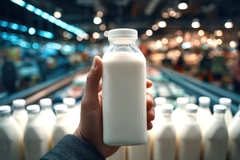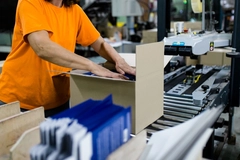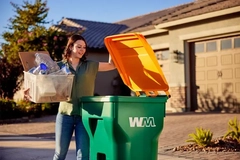Packaging brands can steer US recycling habits, WM report finds
Key takeaways
- WM’s 2025 Recycling Report highlights a “say-do gap” — while most US citizens want to recycle, barriers like limited access, knowledge gaps, and inconvenience hinder participation.
- Companies can close the loop by designing recyclable packaging, using recycled content, and communicating sustainability efforts to consumers.
- WM is investing over US$1.4 billion through 2026 to build advanced recycling facilities and expand recycling education.
WM, North America’s largest recycler, has released its 2025 Recycling Report, revealing a gap between US citizens’ desire to recycle and their actions. The report says packaging companies can influence consumer purchases by prioritizing recyclability.
It finds that access and convenience are some of the biggest barriers preventing people from recycling.
“In fact, 44% of those who find recycling difficult say driving to another location is the biggest barrier, and 30% cite limited curbside pickup. Knowledge gaps are another issue: nearly three in ten people aren’t sure what can and can’t be recycled, and many lack confidence that their recyclables are being processed correctly,” Brent Bell, vice president of recycling at WM, tells Packaging Insights.
“Beyond that, life gets busy,” he adds. “The behavioral research revealed that recycling often competes with other priorities, and even well-intentioned people can fall short on recycling when time and energy are limited.”
WM sees this as an opportunity to close the “say-do gap” by working across the recycling system to make it “easier, more convenient, and better understood.”
Recycled content creates demand
 Brent Bell, vice president of recycling at WM.Nearly two-thirds (63%) of respondents say they are more likely to buy from companies that use recycled content, and 79% say they would be more motivated to recycle if they knew everyday products were made from recycled materials, the report finds.
Brent Bell, vice president of recycling at WM.Nearly two-thirds (63%) of respondents say they are more likely to buy from companies that use recycled content, and 79% say they would be more motivated to recycle if they knew everyday products were made from recycled materials, the report finds.
“Consumer packaged goods companies that choose to make recycled content part of their products and communicate that commitment can benefit because many consumers are paying attention, and they’re rewarding brands that lead,” explains Bell.
He argues that when companies use recycled content, they can also help fuel demand for recycling, strengthen domestic markets, and make the entire system more effective.
“In addition to being North America’s largest recycler, WM is also a sustainability advisor. We work with brands, sports leagues, teams, and venues, including Major League Baseball, to design and implement waste diversion programs that aim to make recycling visible and easy for fans and customers,” Bell adds.
“This work can create a culture of sustainability at events, which is important because we found that many consumers (77%) notice when businesses make recycling available.”
By collaborating with companies and venues, WM helps them meet consumer expectations and demonstrate leadership in sustainability.
Consumers want to recycle
Bell says the research finding that “really stands out” is how positively people feel about recycling.
“Nearly half of respondents (48%) say recycling makes them feel satisfied, and 32% feel optimistic. That’s powerful because it means recycling can be more than a routine part of daily life; it can be a feel-good habit.”
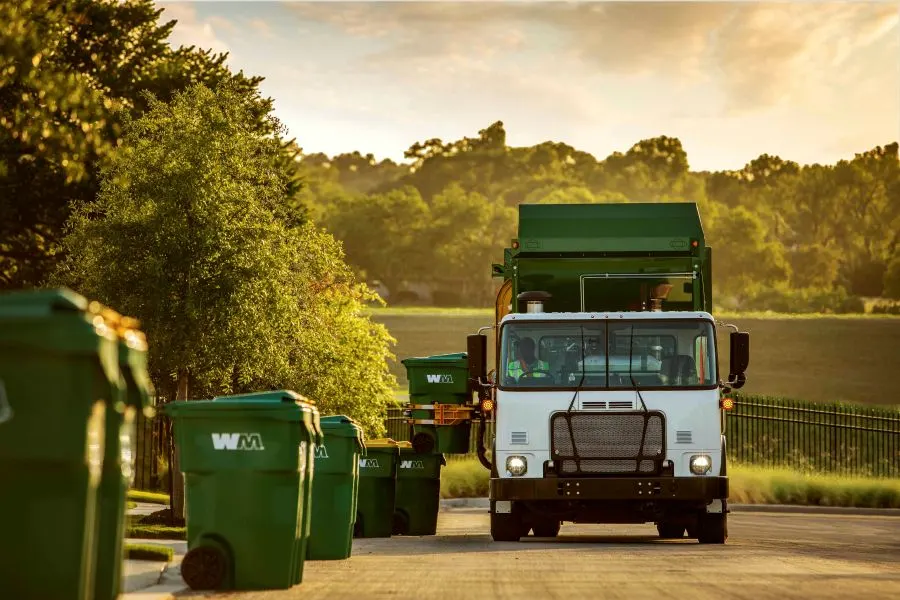 Companies using recycled content can help close the recycling loop and boost consumer participation.WM also sees an opportunity in recycling education. “While only 23% of respondents say they understand how recycled materials become new products, nearly three-quarters (74%) want to learn more. And 64% say they’d recycle more if they knew what to and not to recycle.”
Companies using recycled content can help close the recycling loop and boost consumer participation.WM also sees an opportunity in recycling education. “While only 23% of respondents say they understand how recycled materials become new products, nearly three-quarters (74%) want to learn more. And 64% say they’d recycle more if they knew what to and not to recycle.”
“If we can tap into that curiosity and make recycling simple and convenient, we can drive real change.”
The 2025 WM Recycling Report is said to reinforce recycling as a shared responsibility requiring collaboration and action from recycling providers, companies, policymakers, local municipalities, and consumer households.
“At WM, we’re committed to continuing our investments in technology, infrastructure, and education to help turn good intentions into lasting impact.”
Improving recycling availability
Bell tells us that WM aims to strengthen recycling through infrastructure investments, educating communities on how to recycle properly, and collaboration with customers, municipalities, and others.
“We’re executing on plans to invest more than US$1.4 billion from 2022 through 2026 to upgrade or build 39 recycling facilities that are equipped with advanced technology intended to help us capture more material and process it more efficiently.”
“We’re also working with municipalities and communities to help make recycling simpler and more accessible, such as through our work with the National League of Cities to provide city officials with resources and tools to help their communities recycle correctly. “
Education is another important aspect of recycling. Bell emphasizes the importance of helping people understand what happens to their recyclables and why it matters.
“We do this by inviting members of the community into some of our recycling facilities for tours and raising awareness about what recyclable materials can become as new products, such as new backpacks, cans, and bottles.”
Recycling is a shared responsibility, according to WM, and the recycler says it is committed to doing its part to make it easier.
Leveraging automation and AI
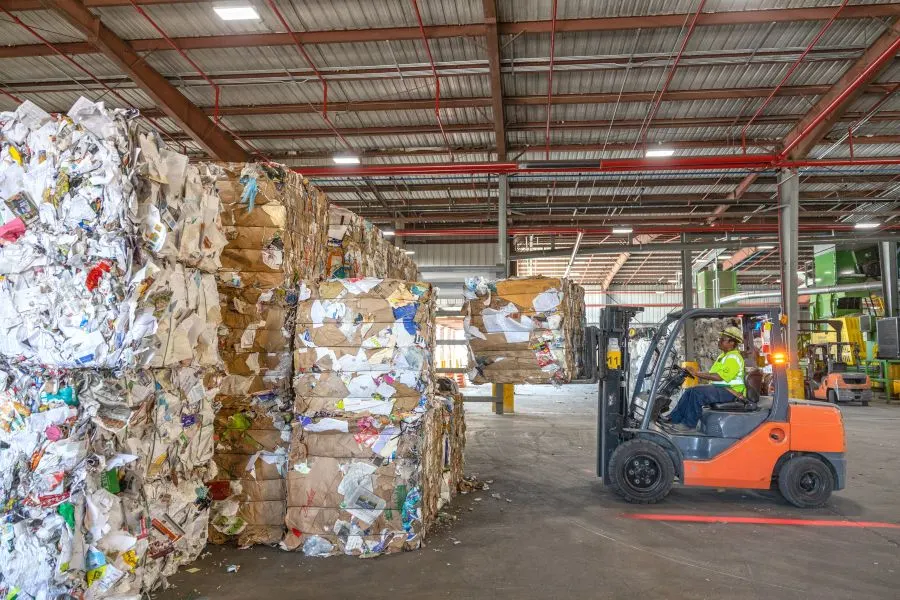 WM’s new AI-powered recycling facilities aim to make sorting faster, smarter, and more efficient.Recently, there have been significant advancements in recycling technology and WM’s facilities, according to Bell.
WM’s new AI-powered recycling facilities aim to make sorting faster, smarter, and more efficient.Recently, there have been significant advancements in recycling technology and WM’s facilities, according to Bell.
“Most notably with how we are able to sort our materials and adapt to the future more quickly.”
WM’s new and upgraded facilities are using technology, such as optical sorters, that leverage automation and AI to sort through our materials more accurately and efficiently.
“We can also continuously train and program our technology to identify various materials, including new packaging designs as they evolve.”
Bell explains that this means that households are able to recycle higher quantities and recycle materials that they previously could not, contributing to the circular economy.


